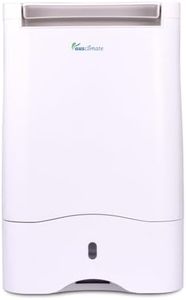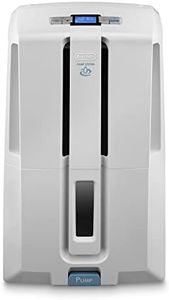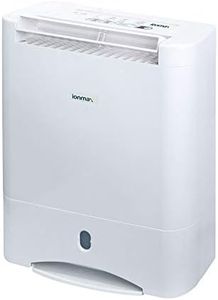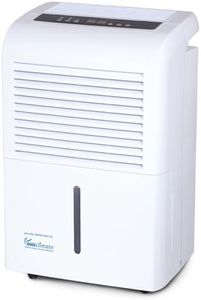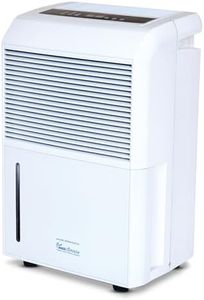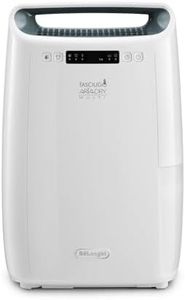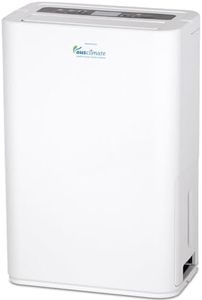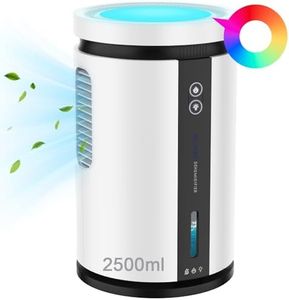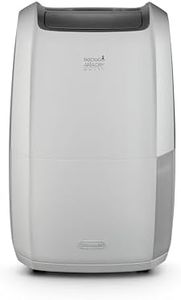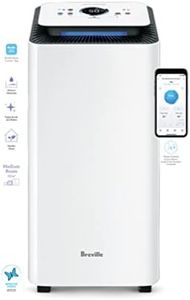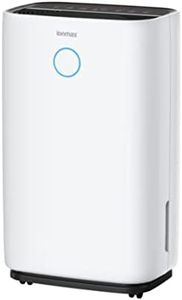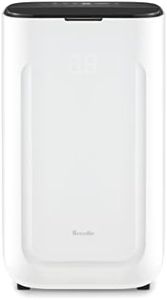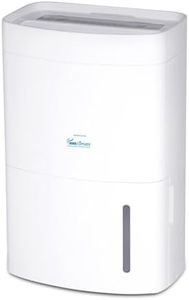We Use CookiesWe use cookies to enhance the security, performance,
functionality and for analytical and promotional activities. By continuing to browse this site you
are agreeing to our privacy policy
10 Best Dehumidifier For Mold
From leading brands and best sellers available on the web.Buying Guide for the Best Dehumidifier For Mold
Choosing a dehumidifier for mold prevention and removal is all about creating a healthier indoor environment by reducing excess moisture. Mold thrives in damp spaces, so the right dehumidifier can help stop it from growing. Start by examining your room size and understanding the moisture problem you face. Think about where you’ll use the dehumidifier—like basements, bathrooms, or whole homes—and consider convenience features that make daily use easier. Your main goal is to balance power, efficiency, and ease of maintenance for the space you want to protect.Capacity (Pint Removal per Day)Capacity tells you how much moisture the dehumidifier can pull from the air in a 24-hour period, usually measured in pints. This spec matters because bigger, damper spaces will need a unit that can extract more water. Light dampness or small bedrooms might do well with smaller capacity units (20-30 pints), while heavily damp basements or large areas benefit from higher capacities (40-70 pints or more). To choose the right one, gauge the dampness of your space: If you’re fighting strong mold growth or humidity in a big area, go larger. For mild cases or maintenance in smaller rooms, less capacity might be enough.
Room Coverage (Square Footage)Room coverage indicates the maximum area the dehumidifier can effectively handle, given in square feet. It’s important because a unit that’s too small for the space won’t remove enough moisture and might run constantly, wearing out faster. Manufacturers usually segment models for small rooms (up to 300 sq ft), medium spaces (300-700 sq ft), and large areas (700 sq ft and above). To pick what suits you, measure your room and match it to the device’s recommended coverage. Always go a little higher if your space is at the limit or very humid.
Humidistat (Humidity Control)A humidistat is a built-in sensor that lets you set and monitor your preferred humidity level. It’s important because controlling humidity below 60% helps prevent mold. Units may offer manual dials or digital readouts for adjusting set points. Basic models might have only simple settings, while advanced units allow you to precisely select your target humidity. If you want hands-off protection, look for models with automatic humidistats—these will keep the room at your chosen level for ongoing mold control.
Drainage Options (Manual and Continuous)Drainage refers to how the water collected is removed from the dehumidifier. Small models often use a tank you empty by hand, which could fill up quickly in damp areas. Many dehumidifiers offer a continuous drainage feature, using a hose to drain to a floor drain or sink, which is handy for long-term use or when frequent emptying is inconvenient. For spaces with severe moisture or for basement settings where emptying a tank is tough, prioritizing a continuous drain feature can save a lot of hassle.
Filter Type and MaintenanceDehumidifiers use air filters to capture dust, mold spores, and other particles. This is important because cleaner air means less chance for mold to spread. Some filters are simple meshes you rinse regularly, while others are more advanced (like HEPA or activated carbon) for extra filtration. For most homes, a washable or replaceable filter is fine and needs checking every few weeks. If allergies are a concern, look for improved filtration; otherwise, a standard filter keeps the unit running trouble-free.
Noise LevelNoise level shows how loud the dehumidifier is during operation, often given in decibels. It's important especially for bedrooms or living areas, since some units can be surprisingly loud. Quiet models generally have a lower decibel rating and are comfortable for sleeping or relaxing. For basements or utility areas, noise might not matter as much. Think about where the unit will run—if near people or in noise-sensitive spaces, pick a quieter model.
Energy EfficiencyEnergy efficiency tells you how much electricity the dehumidifier uses for its moisture removal. It’s key because the device might run for hours daily—efficient units cost less to operate and are better for the environment. Look for energy certification labels or specs that highlight low power consumption. If you expect to use your dehumidifier heavily or in a large space, prioritizing energy efficiency saves money over time.
